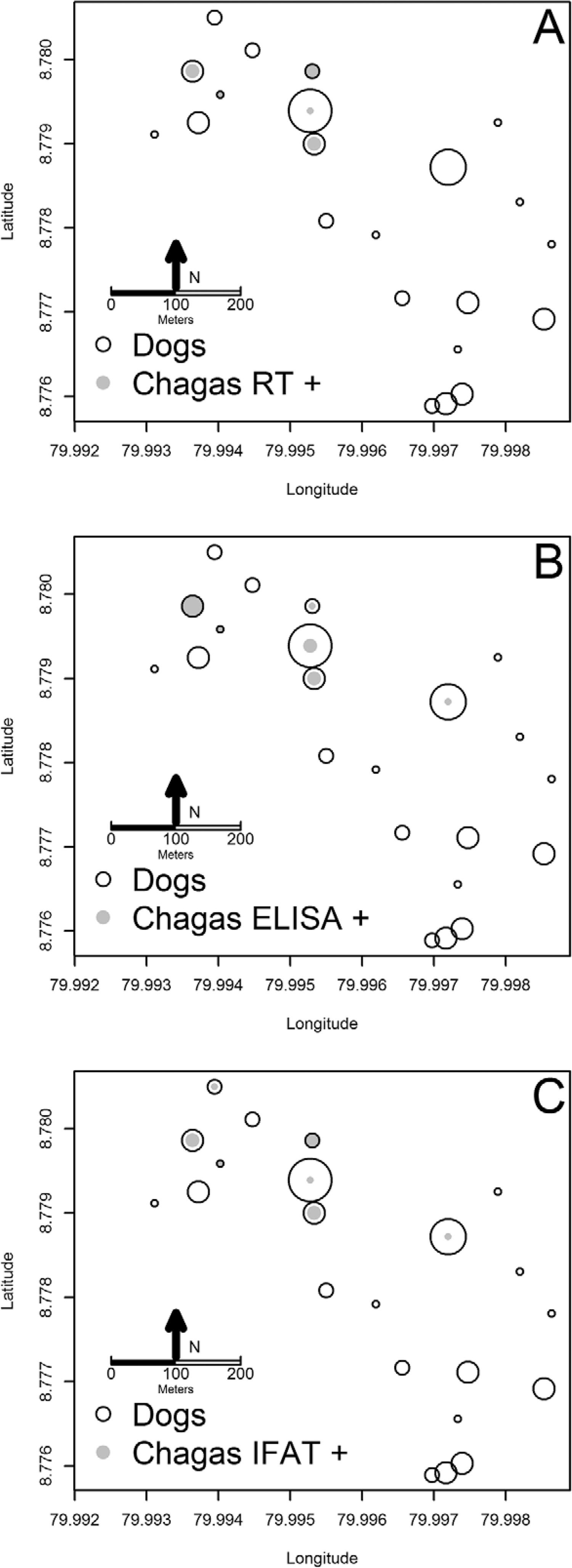Chagas disease, caused by Trypanosoma cruzi infection, is a zoonosis of humans, wild and domestic mammals, including dogs. In Panama, the main T. cruzi vector is Rhodnius pallescens, a triatomine bug whose main natural habitat is the royal palm, Attalea butyracea. In this paper, we present results from three T. cruzi serological tests (immunochromatographic dipstick, indirect immunofluorescence and ELISA) performed in 51 dogs from 24 houses in Trinidad de Las Minas, western Panama. We found that nine dogs were seropositive (17.6% prevalence). Dogs were 1.6 times more likely to become T. cruziseropositive with each year of age and 11.6 times if royal palms where present in the peridomiciliary area of the dog’s household or its two nearest neighbours. Mouse-baited-adhesive traps were employed to evaluate 12 peridomestic royal palms. All palms were found infested with R. pallescens with an average of 25.50 triatomines captured per palm. Of 35 adult bugs analysed, 88.6% showed protozoa flagellates in their intestinal contents. In addition, dogs were five times more likely to be infected by the presence of an additional domestic animal species in the dog’s peridomiciliary environment. Our results suggest that interventions focused on royal palms might reduce the exposure to T. cruzi infection.
Trypanosoma cruzi; Canis familiaris; Rhodnius pallescens; Attalea butyracea; Chagas disease; Panama


